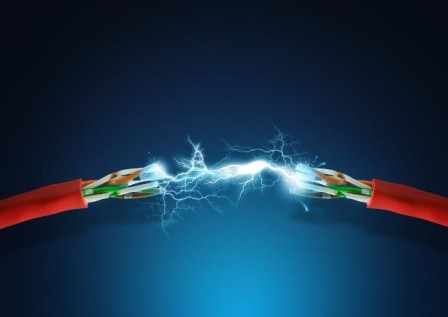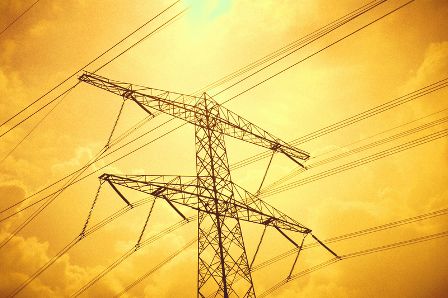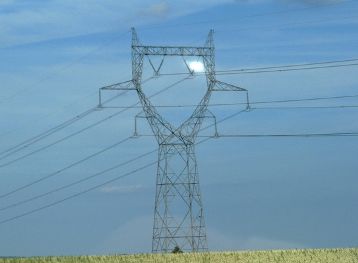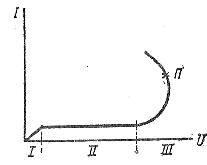Gas conductivity
Gases are usually good dielectrics (e.g. clean, non-ionized air). However, if the gases contain moisture mixed with organic and inorganic particles and are ionized at the same time, then they conduct electricity.
In all gases, even before an electric voltage is applied to them, there is always a certain amount of electrically charged particles—electrons and ions—that are in random thermal motion. These can be charged particles of gas, as well as charged particles of solids and liquids — impurities found, for example, in the air.
The formation of electrically charged particles in gaseous dielectrics is caused by gas ionization from external energy sources (external ionizers): cosmic and solar rays, radioactive radiation of the Earth, etc.

The electrical conductivity of gases depends mainly on the degree of their ionization, which can be carried out in different ways. In general, the ionization of gases occurs as a result of the release of electrons from a neutral gas molecule.
An electron released from a gas molecule mixes in the intermolecular space of the gas, and here, depending on the type of gas, it can maintain a relatively long "independence" of its movement (for example, in such gases, the hydrogen shock H2, nitrogen n2) or , on the contrary, quickly penetrate a neutral molecule, turning it into a negative ion (for example, oxygen).
The greatest effect of ionization of gases is achieved by irradiating them with X-rays, cathode rays or rays emitted by radioactive substances.
Atmospheric air in summer is very intensively ionized under the influence of sunlight. Moisture in the air condenses on its ions, forming the smallest water droplets charged with electricity. Eventually, thunderclouds accompanied by lightning are formed from individual electrically charged water droplets, i.e. electrical discharges of atmospheric electricity.

The process of gas ionization by external ionizers is that they transfer part of the energy to the gas atoms. In this case, the valence electrons gain additional energy and are separated from their atoms, which become positively charged particles — positive ions.
The formed free electrons can maintain their independence from movement in a gas for a long time (for example, in hydrogen, nitrogen) or after some time attach to electrically neutral atoms and gas molecules, turning them into negative ions.
The appearance of electrically charged particles in a gas can also be caused by the release of electrons from the surface of metal electrodes when they are heated or exposed to radiant energy.While in disturbed thermal motion, some of the oppositely charged (electrons) and positively charged (ions) particles unite with each other and form electrically neutral atoms and gas molecules. This process is called repair or recombination.
If a volume of gas is enclosed between metal electrodes (disks, balls), then when an electric voltage is applied to the electrodes, electric forces will act on the charged particles in the gas — the electric field strength.
Under the action of these forces, electrons and ions will move from one electrode to another, creating an electric current in a gas.
The current in the gas will be greater, the more charged particles with different dielectric are formed in it per unit of time and the greater speed they acquire under the action of the electric field forces.
It is clear that as the voltage applied to a given volume of gas increases, the electrical forces acting on electrons and ions increase. In this case, the velocity of the charged particles and therefore the current in the gas increases.
The change in the magnitude of the current as a function of the voltage applied to the gas volume is expressed graphically in the form of a curve called the volt-ampere characteristic.
Current-voltage characteristic for a gaseous dielectric
The current-voltage characteristic shows that in the region of weak electric fields, when the electric forces acting on the charged particles are relatively small (area I in the graph), the current in the gas increases in proportion to the value of the applied voltage. In this area, the current changes according to Ohm's law.
As the voltage increases further (region II), the proportionality between current and voltage is broken. In this region, the conduction current does not depend on the voltage. Here, energy is accumulated from charged gas particles — electrons and ions.
With a further increase in voltage (region III), the speed of charged particles increases sharply, as a result of which they often collide with neutral gas particles. During these elastic collisions, electrons and ions transfer some of their accumulated energy to neutral gas particles. As a result, electrons are stripped from their atoms. In this case, new electrically charged particles are formed: free electrons and ions.
Due to the fact that the flying charged particles collide very often with the atoms and molecules of the gas, the formation of new electrically charged particles occurs very intensively. This process is called shock gas ionization.
In the impact ionization region (region III in the figure), the current in the gas increases rapidly with the smallest increase in voltage. The impact ionization process in gaseous dielectrics is accompanied by a sharp decrease in the volume resistance of the gas and an increase in dielectric loss tangent.
Naturally, gaseous dielectrics can be used at voltages lower than those values at which the impact ionization process occurs. In this case, gases are very good dielectrics, where the volume specific resistance is very high (1020 ohms)x cm) and the tangent of the dielectric loss angle is very small (tgδ ≈ 10-6).Therefore, gases, particularly air, are used as dielectrics in example capacitors, gas-filled cables, and high voltage circuit breakers.

The role of gas as a dielectric in electrical insulating structures
In any insulating structure, air or other gas is present to some extent as an element of insulation. The conductors of overhead lines (VL), busbars, transformer terminals and various high-voltage devices are separated from each other by gaps, the only insulating medium in which is air.
Violation of the dielectric strength of such structures can occur both through the destruction of the dielectric from which the insulators are made, and as a result of discharge in the air or on the surface of the dielectric.
Unlike insulator breakdown, which leads to its complete failure, surface discharge is usually not accompanied by failure. Therefore, if the insulating structure is made in such a way that the surface overlap voltage or breakdown voltage in air is less than the breakdown voltage of the insulators, then the actual dielectric strength of such structures will be determined by the dielectric strength of air.
In the above cases, air is relevant as a natural gas medium in which the insulating structures are located. In addition, air or other gas is often used as one of the main insulating materials to insulate cables, capacitors, transformers and other electrical devices.
To ensure reliable and trouble-free operation of insulating structures, it is necessary to know how various factors affect the dielectric strength of a gas, such as the form and duration of the voltage, the temperature and pressure of the gas, the nature of the electric field, etc.
See on this topic: Types of electric discharge in gases

